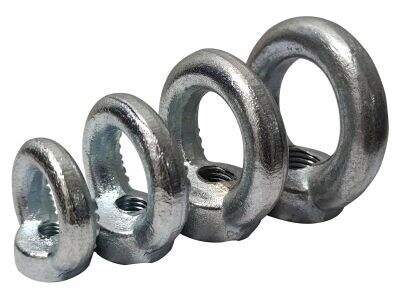The working load limit informs you of the maximum weight this snap hook will hold before potentially breaking or bending. An accident or damage can occur if snap hook is used outside this range. At LoadStar, we ensure each snap hook has a visible load limit on it so workers can rely on them in the field.
Working Load Limit of Heavy Duty Snap Hooks
There are a lot of important things that change how much weight a snap hook can take. One, the identity of the metal used makes a really big difference. Metal strength strong metals, such as stainless steel or forged alloy, will support more weight than cheaper metals. But it isn’t just strength. The size and shape of the snap hook make a difference here as well. Better force dissipation comes from stout, well-shaped hooks that don’t bend readily.
Wholesale Industrial Snap Hooks with Verified Load Limits
Few sellers included with their snap hooks specific details about the weight they can support, and some even provided false information. LoadStar understands this problem well. We sell durable slings with hooks in wholesale that are tested for their load limit. Each snap hook is checked up to standard and recorded in the computer. That is what we call peace of mind that comes from knowing our products won’t fail when used properly. When you are in need of multiple snap hooks, purchasing from LoadStar is saving both time and headache. Our staff assists customers in choosing the fitting hook to match their job requirements be it, lifting heavy materials or even securing equipment and construction.
Use Depending on the Load Capacities
When selecting snap hooks for industrial work, be sure to take into account the amount of weight your hook can hold. This is known as the working load limit (WLL). We always advise our LoadStar customers to read the WLL of a snap hook before selecting them. The WLL is the maximum weight a snap hook can handle without breaking or bending. Choose a turnbuckle hook & eye is too weak and you set yourself up for an accident, or damage to gear. Determine first the maximum load you will be lifting or securing whenever choosing a snap hook.
Limit in the Industrial Snap Hook Safety
The WLL informs you the working clevis slip hook with latch can bear without breaking. If you disregard the WLL or rely on a hook with lesser limits than required, then such a hook can fail. This can cause heavy objects to fall and possibly harm people or damage equipment. At LoadStar, we also make a point of reminding you that applying snap hooks when it comes to WLLs is one of the main safety rules. If a snap hook is properly employed, it can help maintain loads secure and steady. This is crucial in various industries, such as construction, shipping and manufacturing where heavy stuff is lifted or moved.
DETERMINING THE WORKING LOAD LIMIT
Many individuals err when calculating the working load limit on snap hooks. Such errors can also be hazardous, if the hook should fail in use. A mistake is often made with this when people don't understand about the breaking strength and WLL. Breaking strength is the amount of force a snap hook can withstand before breaking, but WLL is much lower. There is a safety factor in the WLL to keep workers safe. Some people assume that the breaking strength should be used as the WLL and this is dangerously wrong.

 EN
EN
 AR
AR
 BG
BG
 HR
HR
 CS
CS
 DA
DA
 NL
NL
 FI
FI
 FR
FR
 DE
DE
 EL
EL
 HI
HI
 IT
IT
 JA
JA
 KO
KO
 NO
NO
 PL
PL
 PT
PT
 RO
RO
 RU
RU
 ES
ES
 SV
SV
 TL
TL
 IW
IW
 ID
ID
 LT
LT
 SR
SR
 SL
SL
 SQ
SQ
 HU
HU
 TH
TH
 TR
TR
 FA
FA
 AF
AF
 MS
MS
 HY
HY
 AZ
AZ
 BN
BN
 SO
SO
 KK
KK

